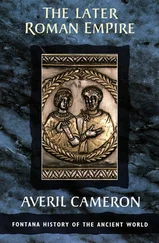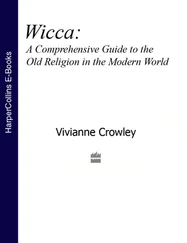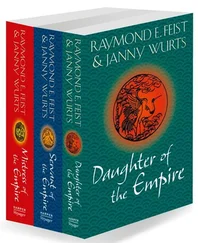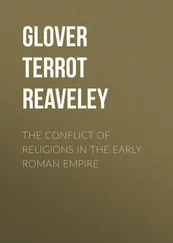From the first century AD a new series of religious movements appear which did stress the identity of their founder, tended to make use of sacred texts, and tended to demand exclusive adherence and to claim uniquely accurate knowledge of the cosmos (as opposed to authoritative knowledge about how to perform particular rituals). Rabbinical Judaism, Christianity, Manichaeism and Islam were the most successful but there were others as well, and Sassanian period Zoroastrianism could be considered alongside them. 55It is reasonable to ask how far they were shaped by developing in a world dominated by empires. 56A range of suggestions can be made. As has already been observed empires tend to foster networks of cities, facilitate movement and communication of various kinds, and often nurture diasporas within them. Diaspora is a perfect incubator of religious identity, since common beliefs and rites are one means by which populations distinguish themselves from their neighbours.
The transformations of Isis from Egyptian through Greek and Roman versions provides one example of the generalization or universalization of previous local religions. 57A Bronze Age deity who occupied an important place in the Egyptian myth of the death of Osiris was identified probably during the Persian period with the Greek goddess Demeter and in the last centuries BC worshipped by Egyptians in the Aegean world and Greeks in Egypt. Associated with many other powerful female deities, and given a Greek iconography she gradually became popular in Sicily, southern Italy and eventually in Rome from where she moved north of the Alps. By the first century AD she was mostly accompanied just by Serapis (a new version of Osiris) and her baby son Harpocrates (once Egyptian Horus) and had new roles not just in initiation rituals modelled on Greek mystery cults but also as a goddess of sailors. The navigium Isidis, a ceremony opening the sailing season each year, was celebrated in port cities in the west and eastern Mediterranean basins during the early empire.
Some other features of imperial rule may have played a part. Most empires have relied on writing and written law or edict. The kind of sacred texts used by emergent religions were not very like those issued by emperors but they shared in (or challenged) their authority. Imperial messages were sometimes entitled sacrae litterae and imperial and religious documents were often inscribed in monumental inscriptions from the Achaemenid period onwards. Finally there were the grandiose universalisms created by many early empires. 58Perhaps earthly empire, with its great symbolic production of maps and globes, geographies and astrologies, and all those divine emperors, helped create a space for more grandiose cosmologies. It seems unlikely that a new species of entrepreneurs appeared in this period, and more likely that their ideas found more fertile ground among the subjects of earthly empires. In the long run, the religions they helped create, long outlasted the empires of Eurasian antiquity.
Ando, Clifford 2003. »A Religion for the Empire.« In Flavian Rome. Culture, Image, Text , ed. A.J. Boyle, W.J. Dominik. Leiden: Brill. 321–44.
— 2007. »Exporting Roman Religion.« In Companion to Roman Religion , ed. Jörg Rüpke. Malden: Blackwell. 429–445.
— 2008. The Matter of the Gods. Religion and the Roman Empire. Berkeley: University of California Press.
— (ed.) 2016. Citizenship and empire in Europe 200–1900. The Antonine Constitution after 1800 years. Stuttgart: Franz Steiner Verlag.
Baldwin, Alexandra, Jody Jo 2017. A Celtic Feast. The Iron Age cauldrons from Chisledon, Wiltshire . London: The British Museum.
Bang, Peter Fibiger, Dariusz Kolodziejczyz (eds.) 2012. Universal Empire. A comparative approach to imperial culture and representation in Eurasian History. Cambridge: Cambridge University Press.
Barnes, T. D. 1985. »Constantine and the Christians of Persia.« Journal of Roman Studies 75 . 126–136.
Bauchhenß, Gerhard 2008. »Hercules in Gallien – facts and fiction.« In Continuity and Innovation in Religion in the Roman West , ed. Ralph Haeussler, Anthony C. King. Providence RI: Journal of Roman Archaeology. 91–102.
Beard, Mary, John North, and Simon Price 1998. Religions of Rome. Volume 1, A history . Cambridge: Cambridge University Press.
Beck, Roger 1998. »The Mysteries of Mithras. A new account of their genesis.« Journal of Roman Studies 8 . 115–128.
Bickerman, Elias 1952. »Origines Gentium.« Classical Philology 47 . 65–81.
Bonnet, Corinne 1988. Melqart. Cultes et mythes de l’ Héraclès Tyrien en Méditerranée . Studia Phoenicia 8. Leuven: Presses Universitaires de Namur.
— 2015. Les enfants de Cadmos. Le paysage religieux de la Phénicie hellénistique. Paris: Éditions de Boccard.
Bonnet, Corinne, Laurent Bricault 2016. Quand les dieux voyagent. Cultes et mythes en mouvement dans l’espace méditerranéen antique. Geneva: Labor et Fides.
Bonnet, Corinne, Colette Jourdain-Annequin (eds.) 1992. Héraclès. D’une rive à l’autre de la Mediterranée . Bruxelles: Institut Historique Belge de Rome.
Bonnet, Corinne, Vinciane Pirenne-Delforge, and Danny Praet (eds.) 2009. Les religions orientales dans le monde grec et romain cent ans après Cumont (1906–2006). Bilan historique et historiographique. Colloque de Rome, 16–18 Novembre 2006. Belgisch Historisch Instituut te Rome Studies over Oude Filologie, Archeologie en Geschiedenis 45. Bruxelles: Belgisch Historisch Instituut te Rome.
Bonnet, Corinne, Jörg Rüpke, and Paolo Scarpi (eds.) 2006. Religions orientales – culti misterici. Neue Perspektiven – nouvelles perspectives – prospettive nuove . Potsdamer Altertumswissenschaftlicher Beiträge 16. Stuttgart: Franz Steiner Verlag.
Bricault, Laurent 2019. Isis Pelagia. Images, Names and Cults of a Goddess of the Seas . Religions in the Graeco-Roman World 190. Leiden: Brill.
Burrell, Barbara 2004. Neokoroi. Greek cities and Roman emperors . Cincinnati Classical Studies. New Series 9. Leiden: Brill.
Cadotte, Alain 2007. La romanisation des dieux. L’interpretatio romana en Afrique du Nord sous le Haut-Empire. Religions in the Graeco-Roman World 158. Leiden: Brill.
Cancik, Hubert, Jörg Rüpke (eds.) 1997. Römische Reichsreligion und Provinzialreligion . Tübingen: Mohr Siebeck.
— (eds.) 2009. Die Religion des Imperium Romanum . Tübingen: Mohr Siebeck.
Canepa, Matthew P. 2009. The two eyes of the earth. Art and ritual of kingship between Rome and Sasanian Iran . Vol. 45. The Transformation of the Classical Heritage. Berkeley: University of California Press.
— 2018. The Iranian Expanse. Transforming Royal Identity through Architecture, Landscape, and the Built Environment, 550 BCE–642 CE. Berkeley: University of California Press.
Carleton Paget, James, Judith Lieu (eds.) 2017. Christianity in the Second Century. Themes and developments . Cambridge: Cambridge University Press.
Clarke, Katherine 2008. Making Time for the Past. Local history and the polis . Oxford: Oxford University Press.
Clauss, Manfred 1992. Cultores Mithrae. Die Anhängerschaft des Mithras-Kultes . Heidelberger althistorische Beiträge und epigraphische Studien 10. Stuttgart: Franz Steiner Verlag.
Cumont, Franz 1906. Les religions orientales dans le paganisme romain . Annales du Musée Guimet 24. Paris: E.Leroux.
Derks, Ton 1991. »The perception of the Roman pantheon by a native élite: the example of votive inscriptions from Lower Germany.« In Images of the Past. Studies on ancient societies in north-western Europe , ed. Nico Roymans, F. Theuws. Amsterdam: Instituut voor Pre- en Protohistorische Archeologie. 235–65.
Читать дальше












